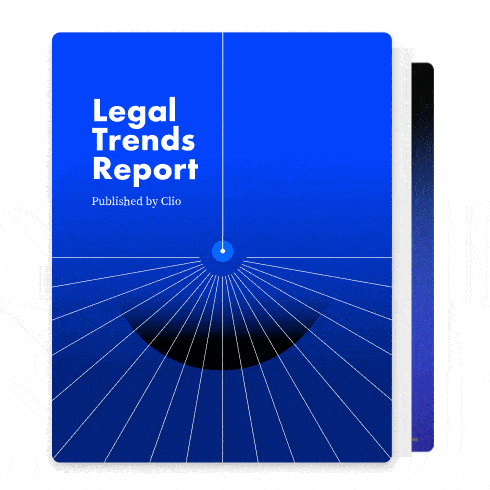Losing a loved one due to someone else’s negligence or intentional actions is a devastating experience. Personal injury lawyers often play a crucial role in helping families seek justice and compensation through wrongful death lawsuits.
Determining fair settlements in wrongful death cases is a complex task that requires careful consideration of various factors. These may include the age and earning capacity of the deceased, medical expenses incurred, funeral costs, the emotional suffering endured by the surviving family members, and the overall impact of the loss.
In this post, we’ll discuss the key considerations for understanding and navigating wrongful death cases. We’ll also be sharing some valuable tips for managing these cases successfully.
What is wrongful death?
Wrongful death occurs when an individual’s life is taken due to the negligence, recklessness, or intentional actions of another person or entity. It is a civil claim often filed by the surviving family members or beneficiaries of the deceased.
Common types of wrongful death cases

Wrongful death cases can arise from various circumstances, including car accidents, medical malpractice, workplace accidents, defective products, or criminal activities. Each case is unique, and it’s essential to understand the specific circumstances to determine the type of wrongful death claim.
Navigating the wrongful death lawsuit process
You understand what wrongful death claims are and why individuals or families might seek wrongful death compensation, but how do you navigate the litigation process? Here are a few important tips to consider.
- File a wrongful death claim: Filing a wrongful death claim may be crucial for several reasons. It allows the surviving family members to seek justice for their loved one’s untimely death, hold the responsible party accountable, and obtain financial compensation to cover medical expenses, funeral costs, lost income, and emotional suffering.
- Establish the responsible party: Identifying the party responsible for the wrongful death is an important step. This may involve gathering evidence to establish fault, which can be challenging. Work closely with your client and conduct a thorough investigation to determine who may be accountable for their loved one’s untimely death.
- Understand the statute of limitations: Each jurisdiction has specific time limits for filing a wrongful death lawsuit. It’s essential to be aware of these deadlines to ensure your client’s claim is not barred. Familiarize yourself with the statute of limitations in your jurisdiction and ensure that your client’s claim is filed within the required timeframe.
- Build a strong case: Gathering sufficient evidence is vital to prove negligence and strengthen your client’s case. Collect police reports, medical records, witness statements, and any other documentation that supports your client’s claim. Work with experts, if necessary, to analyze the evidence and establish a solid foundation for your case.
- Communicate with compassion: Wrongful death cases are emotionally challenging for your clients. Show empathy and compassion when communicating with them. Keep them informed about the progress of their case, answer their questions promptly, and provide support throughout the legal process.
- Collaborate with experts: In complex wrongful death cases, it may be beneficial to collaborate with experts in various fields. These experts can provide insights and opinions that strengthen your client’s case. Consider consulting medical professionals, accident reconstruction specialists, or financial experts to bolster your arguments.
Role of lawyers in negotiating settlements
In the mournful period that follows the heart-wrenching loss of a loved one, families find themselves in need of support and guidance. This is where lawyers can step in, offering both expertise and compassion to help grieving families reach a fair settlement. But what are the necessary skills for navigating such sensitive cases and reaching fair settlements?
Legal expertise: Lawyers bring their in-depth knowledge of wrongful death laws and regulations to the negotiation table. They understand the legal complexities involved in these cases and can effectively navigate through them to advocate for their clients’ best interests.
Emotional support: Lawyers also play an important, albeit unwritten, role in providing emotional support to grieving families. They understand the immense emotional toll of losing a loved one and offer compassion and empathy throughout the legal process. However, it’s crucial for lawyers to recognize their own limitations and know when to refer clients to skilled grief counselors or therapists who can provide specialized emotional support.
Strategic negotiation: Lawyers are skilled negotiators who can develop effective strategies to maximize the settlement amount. They assess the strengths and weaknesses of the case, gather evidence, consult with experts, and leverage their legal expertise to present a compelling argument for fair compensation.
Communication and representation: Lawyers serve as the primary point of contact between their clients and the opposing party, such as insurance companies or defense counsel. They handle all communication, ensuring that their clients’ rights and interests are protected throughout the negotiation process.
Mediation and alternative dispute resolution: Lawyers can explore alternative dispute resolution methods, such as mediation, to reach a settlement outside of court. They guide their clients through the mediation process, facilitating productive discussions and working towards a mutually agreeable resolution.
Ensuring success in your wrongful death case
From proving negligence to avoiding some common pitfalls in wrongful death proceedings, this section will provide you with some strategies for ensuring the best possible outcome for your clients.
Proving negligence in a wrongful death lawsuit
Proving negligence is critical to success in a wrongful death lawsuit. Carefully consider the following steps when establishing negligence:
- Determine duty of care: Determine if the responsible party had a legal duty of care towards the deceased. This duty is often based on the relationship between the parties or a specific obligation, such as a doctor-patient or driver-passenger relationship.
- Show breach of duty: Show that the responsible party breached their duty of care. This requires demonstrating that their actions or lack of actions did not meet the acceptable standard of care expected in similar circumstances.
- Establish causation: Establish a direct causal link between the responsible party’s breach of duty and the death of the victim. This involves proving that the death would not have occurred if it weren’t for the party’s negligence or intentional actions.
- Demonstrate damages: Demonstrate the damages resulting from the death. This includes tangible damages, such as medical expenses and funeral costs, as well as intangible damages, such as loss of financial support, companionship, and emotional distress suffered by the surviving family members.
- Include expert testimony: Consider consulting and presenting expert witnesses who can provide professional opinions on the responsible party’s actions and their deviation from the expected standard of care. Expert testimony can strengthen your case and provide credibility to your arguments.
- Assess comparative negligence: Assess if the deceased shared any responsibility for their own death. In some jurisdictions that follow comparative negligence principles, the degree of fault assigned to each party may affect the amount of compensation awarded.
- Utilize skilled advocacy: Utilize your legal knowledge, persuasive communication skills, and effective presentation of evidence to advocate for your client’s case. Building a compelling narrative around the responsible party’s negligence is crucial in securing a favorable outcome.
Common mistakes to avoid when filing a wrongful death claim

When filing a wrongful death claim, there are a few common pitfalls that must be avoided. Steering clear of these mistakes can strengthen your case and increase the chances of a successful outcome.
- Missing the Statute of Limitations: Failing to file a wrongful death claim within the specified time limit can result in the case being dismissed. Be diligent in determining the applicable statute of limitations and ensure timely filing.
- Not Gathering Sufficient Evidence: Insufficient evidence can weaken a wrongful death claim. Thoroughly investigate the circumstances surrounding the death, gather relevant documents, collect witness statements, and, if necessary, consult with experts to build a strong evidentiary foundation.
- Not Identifying All Potential Defendants: Carefully consider all possible parties who may be held responsible for the wrongful death. Failing to identify and name all potential defendants can limit the scope of damages that can be recovered.
- Not Valuing the Claim Properly: Accurately assessing the value of a wrongful death claim is crucial for seeking fair compensation. Consider both economic and non-economic damages, such as medical expenses, lost wages, loss of companionship, and emotional distress, to ensure the claim is valued appropriately.
- Non-Compliance with Procedural Rules: Wrongful death lawsuits involve specific procedural rules and requirements. Failing to adhere to these rules can lead to the dismissal of the case.
Final thoughts on wrongful death lawsuits
Wrongful death lawsuits are complex and emotionally challenging legal matters that require both empathy and expertise. Successfully navigating through such cases also requires attention to detail, strong case management, and efficient document handling. Investing in the right tools can significantly enhance your efficiency and effectiveness as a lawyer.
One of the essential aspects of wrongful death cases, is proper document management. Clio offers a comprehensive legal document management solution that streamlines storage, organization, and accessibility. With features like unlimited document storage, advanced search options, and integration with popular tools like Dropbox and Google Drive.
In addition, Clio offers a Personal Injury Add-On specifically designed to cater to the needs of personal injury lawyers. This add-on enables you to manage all the critical elements of your case, such as medical records, assessing damages, and tracking settlements, all in one centralized location. Book a demo to see it in action.
Note: The information in this article applies only to US practices. This post is provided for informational purposes only. It does not constitute legal, business, or accounting advice.
Explore AI insights in our latest report
Our latest Legal Trends Report explores the shifting attitudes toward AI in the legal profession and the opportunities it brings for law firm billing, marketing, and more.
Read the report

